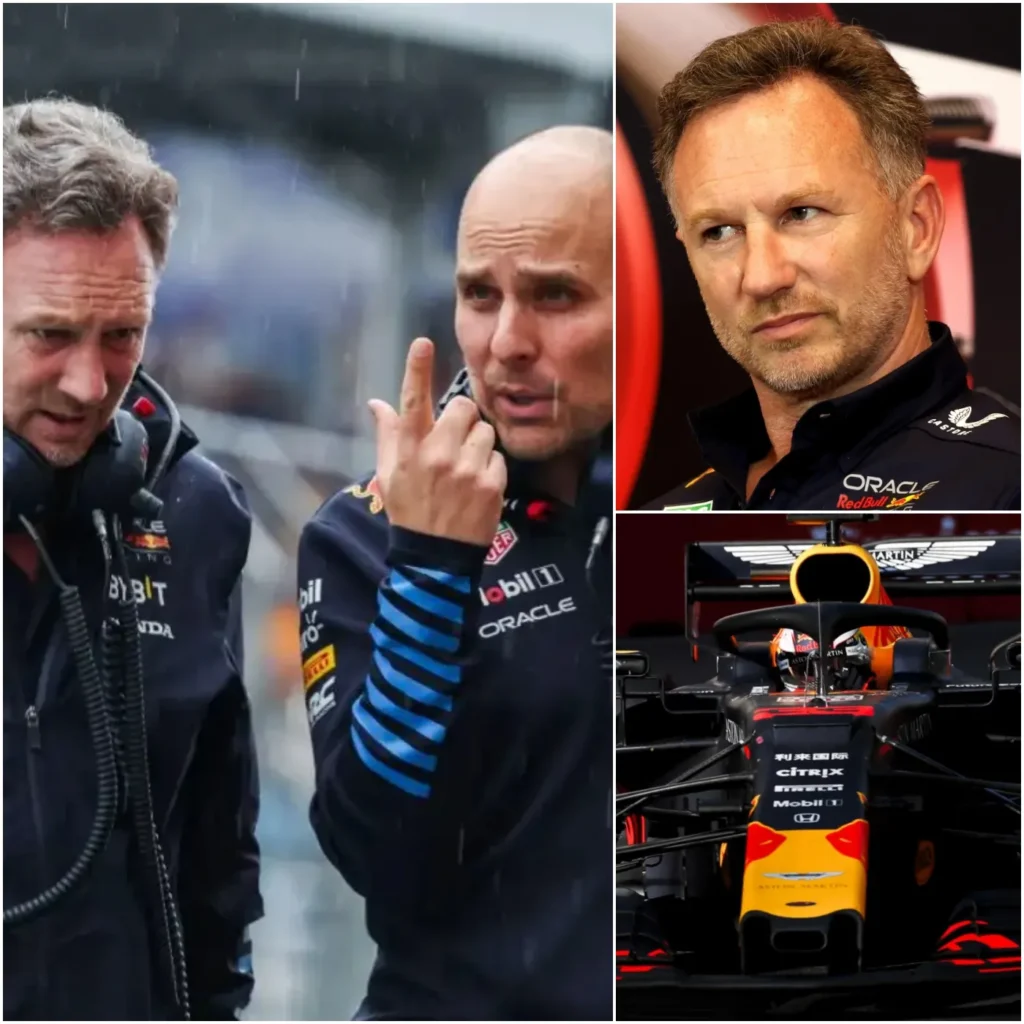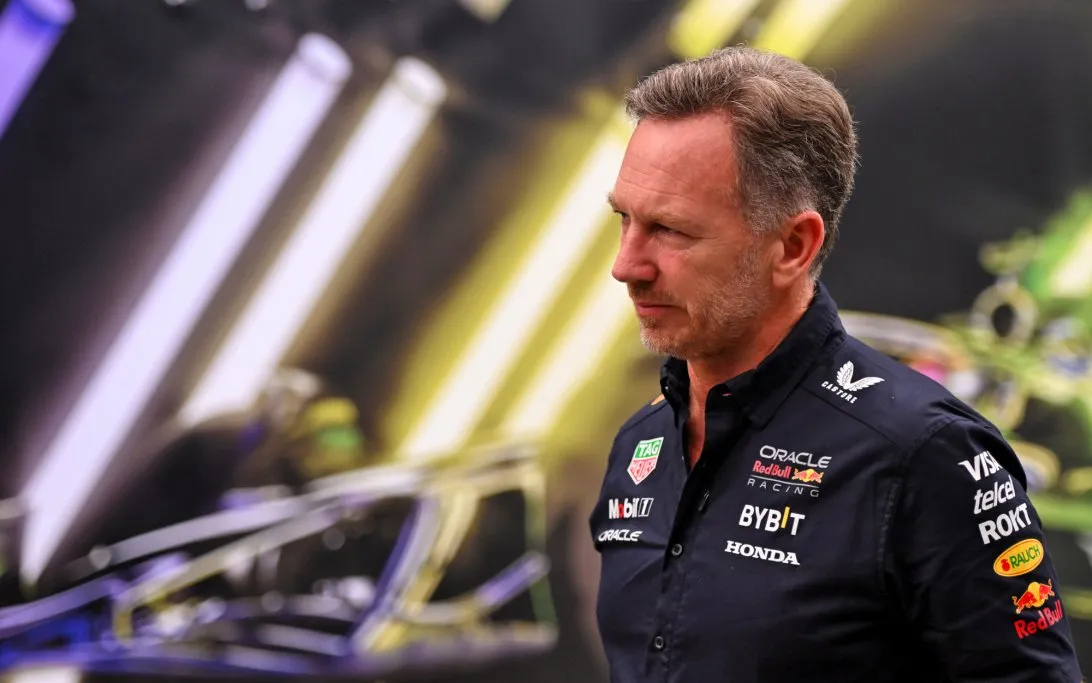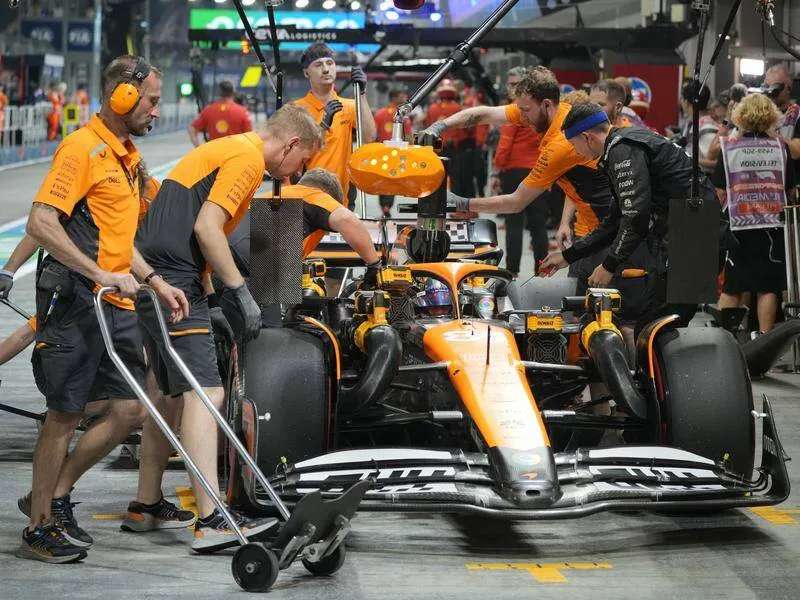Christian Horner’s FIA Wing Controversy: The Curious Case of ‘Race Nine’

Formula 1 thrives on drama, and when the drama isn’t on the track, it’s in the rulebook. Red Bull boss Christian Horner is the latest to raise eyebrows, questioning why the FIA’s newest front-wing regulations won’t take effect until the ninth race of the 2025 season. The delayed enforcement of these stringent wing-flex tests has left Horner bewildered, and in classic F1 fashion, his skepticism has sparked a fresh round of controversy.
But is Horner genuinely perplexed, or is this another case of strategic deflection from Red Bull? More importantly, what does this mean for the competitive landscape of the 2025 Formula 1 season? Let’s dive into the details of this regulatory tweak, its implications, and why Horner’s reaction might be a well-calculated maneuver rather than simple confusion.
If you’ve followed Formula 1 for long enough, you know that the “flexi-wing” debate is a recurring theme in the sport. Teams are constantly looking for creative ways to bend—if not outright break—the rules, and the FIA is forever playing catch-up, tweaking regulations to plug loopholes. In 2024, McLaren and Mercedes came under scrutiny for allegedly exploiting flexible wing designs, much to the chagrin of Red Bull and Ferrari. However, despite the murmurs of protest, the FIA’s investigation concluded that no breaches had occurred.
That’s not to say changes weren’t coming. The FIA announced a two-phase approach to tackle wing flexibility, with rear-wing deflection tests becoming stricter from the start of the 2025 season, while front-wing regulations wouldn’t be enforced until race nine—the Spanish Grand Prix.
Cue Christian Horner’s famous question: “Race nine? Why nine?”

Speaking at Red Bull’s F1 2025 season launch, Horner made his feelings known.
“I think it’s good that they’ve addressed it. Obviously, there’s been a change and a tidy-up to the rear wing. The front wing gets changed at race nine. Why nine? I don’t know, but it is what it is. It’s the same for everyone.”
If you read between the lines, Horner isn’t just puzzled—he’s implying that this staggered enforcement could lead to unnecessary complications. “Pre-race nine” and “post-race nine” regulations create a costly headache for teams, who must develop and implement two different aerodynamic setups within a single season. Given that Red Bull has historically been at the forefront of aerodynamic innovation, some might argue that Horner’s frustration stems from losing a competitive edge.
But here’s where things get interesting: Horner has been in F1 long enough to know that rule changes rarely come without reason. Could it be that Red Bull has been banking on a particular design that might not pass the stricter front-wing tests? Or is he simply stirring the pot to sow uncertainty among his rivals?
Not everyone shares Horner’s concerns. Ferrari’s team principal, Fred Vasseur, took a much more diplomatic approach, emphasizing that clarity was the most important factor.
“For me, it’s not an issue. I think it’s good to have clarity. The worst-case scenario would have been to start the season like we are today and in two or three races, receive a technical directive to change something. That would have been a mess.”
McLaren’s Andrea Stella echoed a similar sentiment, dismissing concerns over the FIA’s front-wing directive.
“No headache at all. We don’t have to make many adjustments at all for the start of the season. There will be a small adjustment required from race nine.”
This calm response raises another question: is Red Bull the only team truly affected by these changes? Or are Ferrari and McLaren simply downplaying their own development concerns to avoid tipping off competitors?
While the casual fan might roll their eyes at yet another regulatory dispute, these mid-season rule shifts have real financial and performance implications. Developing an F1 car is an expensive endeavor, and forcing teams to adjust aerodynamic packages halfway through the season adds an extra layer of cost and complexity.
For smaller teams, these adjustments could prove particularly painful. While Red Bull, Ferrari, and Mercedes have the resources to adapt, midfield teams may struggle to keep pace. A team like Haas, for instance, could find themselves at an even greater disadvantage if they’re forced to reallocate already limited resources toward compliance rather than performance.
Could this be a deliberate move by the FIA to ensure a more balanced playing field, or is it simply a byproduct of bureaucratic decision-making?
With the FIA enforcing rear-wing changes from race one and front-wing changes from race nine, the first half of the season could be a tale of two aerodynamic philosophies. The question is: which teams will be forced to make the biggest compromises?
Red Bull, known for its cutting-edge aerodynamics, might find itself in a precarious position. If their front-wing design is heavily reliant on flexing elements that won’t pass the new tests, they could be forced to roll out a less efficient alternative that hampers performance. On the flip side, if McLaren and Ferrari have already accounted for these changes in their design philosophy, they might gain a crucial edge as the season progresses.

Moreover, teams that adapt best to these evolving rules could position themselves as title contenders. If Red Bull struggles early on, could we see a championship battle featuring McLaren or Ferrari?
Horner’s discontent with the FIA is nothing new, but his questioning of the “race nine” enforcement feels like more than just idle frustration. Whether he’s genuinely confused or subtly attempting to steer the regulatory conversation in Red Bull’s favor, one thing is clear: this rule change has the potential to shake up the pecking order in 2025.
As always, the politics of Formula 1 are as fascinating as the racing itself. Horner has thrown down the gauntlet, and it remains to be seen whether the FIA—or Red Bull’s rivals—will respond in kind. One thing’s for sure: this storyline will be one to watch as the season unfolds.
So, is Horner right to be annoyed, or is this just another clever mind game in F1’s endless game of chess? Let the debate begin.




